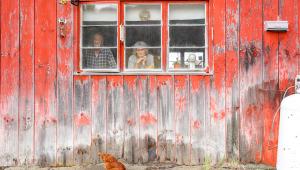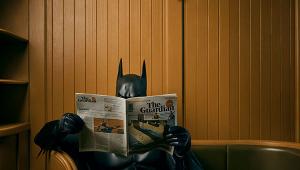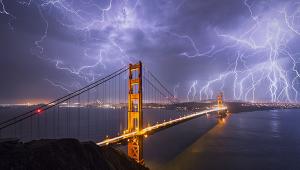Great Exposure: How Social Media Savvy and Lighting Know-How Drive Craig La Mere’s Success

All Photos © Craig La Mere
The first time I met Craig La Mere was at an ice cream shop in Brunswick, Maine, at about 11 p.m. Really. It was the night before the Maine Professional Photographers Association conference was going to kick off. I was there as a print judge, La Mere as a speaker. I recognized him from his Moz (his studio name) logo hat, although he didn’t know who this stranger was who was accosting him.
Over the next couple of days I gained a little insight into who this guy was. His public persona comes across as gruff and unpolished. But don’t be fooled, he is intelligent, driven, and basically a big softy who loves sharing his expertise with others.
La Mere has become known for his meticulously-crafted, fashion-oriented images of women. His signature look is based on the careful attention to lighting displayed in all his images, even though many are accomplished with just one light.
La Mere has become widely known in photography circles in a pretty short amount of time. What follows is some insight into how that all happened plus how he uses light to create his images.
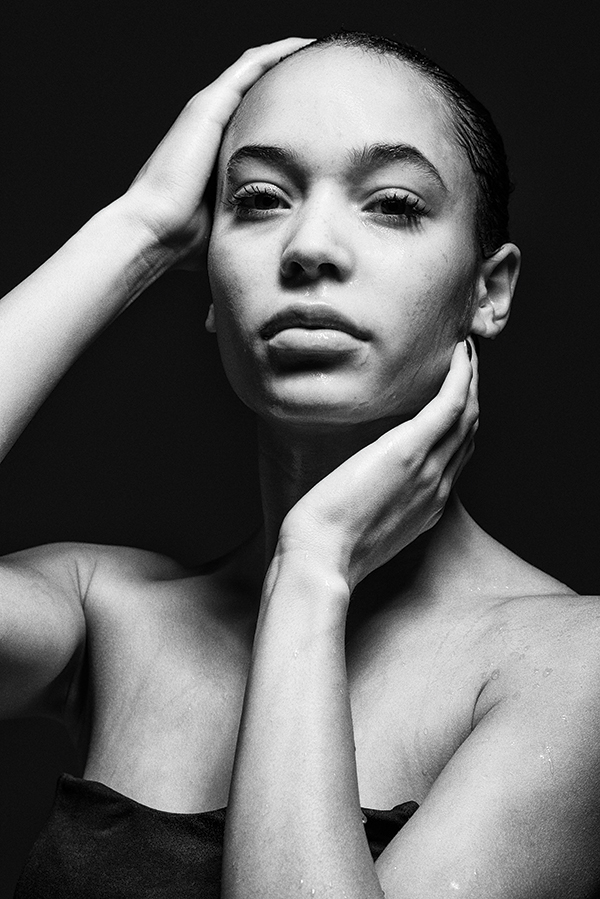
Shutterbug: How does a guy from Pocatello, Idaho, make a name for himself as a beauty/fashion photographer?
Craig La Mere: The Internet and a ton of luck. That is the simple truth. I am a creation of social media. I have busted my butt and put in the work, for sure, and I know where my work sits against my peers, but a lot of people have done the same and there are a lot of shooters way better than me who no one will ever hear of because of lack of exposure. When I started shooting fashion/glam/boudoir I would post all over social media and, as luck had it, people took notice and started to follow my work and that’s when things started to move. One of the things that really worked in my favor is being from a little town in Idaho. A lot of people think you have to be from a huge market to do killer stuff and that really is not the case at all. You just have to decide you are going to kick ass and do it. When people would see my work they assumed I was in a big market and when they found out I was not, it made my work and me more appealing. I get messaged all the time from very nice people who say they are inspired by what I’ve been able to do here in Idaho and if I can do it then they can, too, wherever they are. They are 100 percent right because if my dumbass can do what I have done then anyone can!
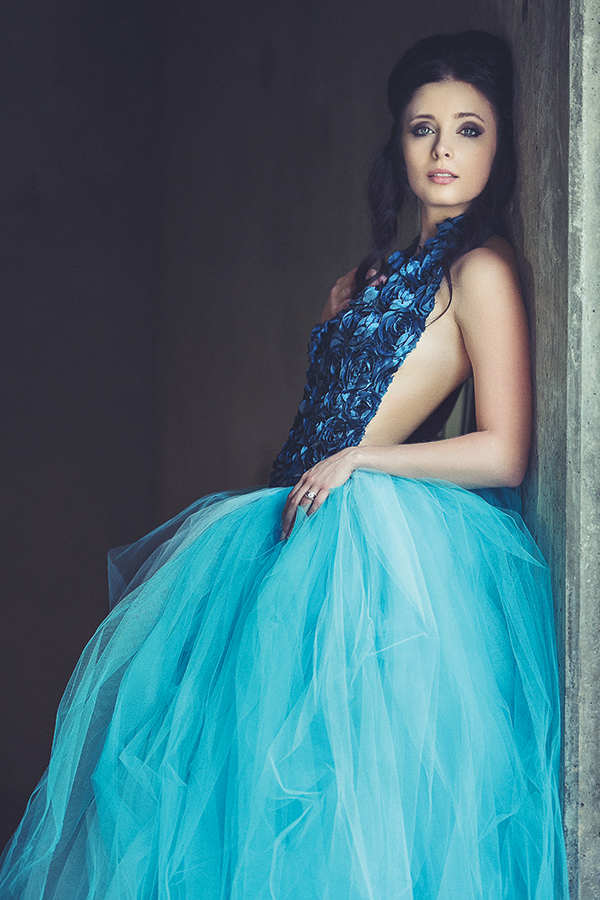
SB: How would you define your lighting style?
CL: My lighting style is a very classic and very precise style of lighting. My lighting is by design and deliberate. Early on I found lighting patterns and they became and are still the foundation of what I do. I really feel if you can understand the strengths and the weaknesses of each of the patterns and understand how to combine and use them you can literally create any image you can think of in your mind. As an example, if you want drama or a more stoic look, shoot Rembrandt or split. If you want airy and lighter, shoot loop or butterfly. If you want badass, shoot a split with a fill and a rim light on the backside. I really feel that one of the criteria that separates a professional shooter from an amateur is the ability to speak to every part of their image. A professional, in my opinion, should be able to tell you why they used a certain lighting pattern, f/stop, lens, focal distance, color palette, pose, and more.

SB: What types of work does your studio do and how do you attract it?
CL: I really have two businesses. Moz Studios is what I would consider my local brand and is one half of my business. When I say local I mean we only market Moz to our market in Idaho. Moz is very mainstream, with my main book of business being high school seniors and families. I attract business for Moz from targeted marketing with specific businesses in my area, social media, and word of mouth. My craiglamere.com brand is my teaching, speaking, and photographer brand. The craiglamere.com brand business comes from teaching workshops, speaking engagements, and shooting outside Idaho. All the business from craiglamere.com is generated from social media and word of mouth.
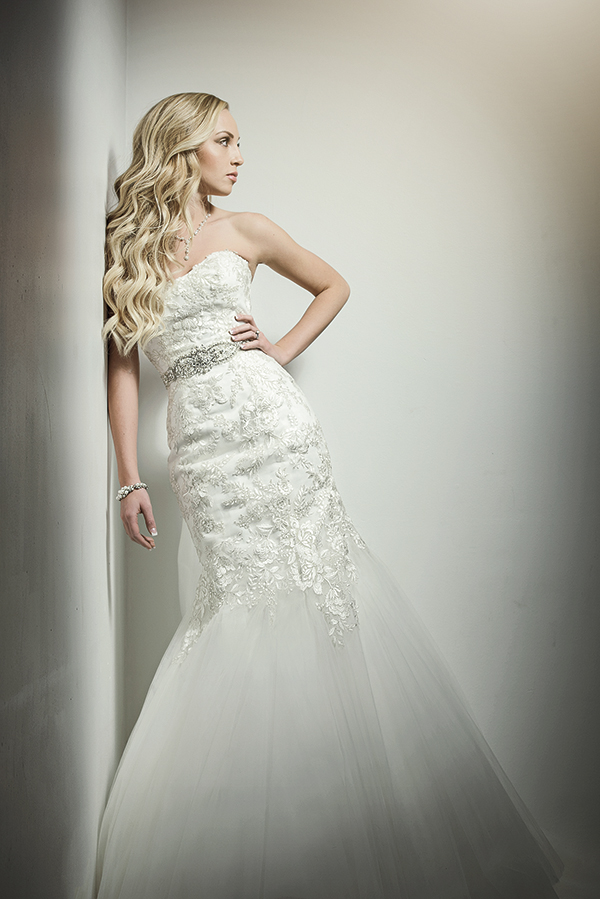
SB: Let’s talk lighting. What are your favorite lights and modifiers?
CL: In the studio I shoot Einsteins and SweetLight Systems’ constant fluorescent lights. I like strobes for edgy or hard lighting or when I have to freeze movement. When I want a very soft feel or when I want to shoot wide open, I will shoot with my constant fluorescent lights. I know you can make about the same light with the right mod on a strobe, but “about” is not the same to me. To me, the light that constant lighting sources produce is so buttery soft and pretty that it cannot be beat. On location I shoot Phottix Indra500s most of the time, but for those times when you have to get to f/20+ to murder the sun, I have my White Lightning X3200. Mods are a hard one because to me mods are just tools and each job needs a different tool to get the job done right. But of all the tools I have, and I pretty much have them all at this point, my favorite tools are my Mola Softlight dishes. The light that comes from them is just freaking awesome. Of my Mola dishes, my favorite, by far, is my 28-inch Setti. Then I would say my 16-inch Rayo and then my 22-inch Demi.
SB: Do you have a “go-to” lens?
CL: I get asked that question a lot about lenses, lights, and modifiers. I say this all the time: Lenses, lights, and modifiers are just tools and there is no one tool that works for every job. So, the answer is simple. My go-to lens, light, or modifier is the one that lets me take the images I have in my head and bring them into the real world the way they should be seen.

SB: Is postproduction an important element in your work?
CL: Postproduction is at least half of the pie in my work. I’m not a SOOC (Straight Out Of Camera) kind of guy. I think you need to do all the pertinent things you should do as a professional shooter like expose properly, compose, and so on, but I really feel 90 percent of images shot by real pros should look pretty close to SOOC and it is in post where you add your own personal secret sauce and make it art. When I shoot, I’m making a base image that I know I can take into post and kick ass on!
SB: What’s the fastest way for a new portrait photographer to get really good at their work?
CL: Shoot and shoot and shoot and then when they are sick of shooting shoot some more. There is one way and ONLY one way to be a great shooter and that is to be a constant practitioner, and to be truly great you have to be a master of all disciplines. I think one of the things new shooters get caught up in is specializing. I think that is terrible and very counterproductive to being awesome. You don’t have to shoot everything for a living or even market that you do, but I feel like to be really great, you should be able to shoot anything if push comes to shove. Great shooters can shoot every light source, every genre; pose anything and anyone at anytime.

SB: Are you really a Badass? ☺
CL: Well, if Badass means getting to do what you love for a living, if it means being surrounded and supported by the most incredible people in the world, if it means finding what you were put on this earth to do, and if it means feeling genuinely fulfilled as a human being, then yes, I’m indeed a Badass!
To see more of Craig La Mere’s images, visit his website, craiglamere.com.




